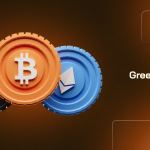
What is a stablecoin? If you’ve ever wished for a cryptocurrency that doesn’t swing wildly in value, stablecoins are the answer. Unlike Bitcoin or other volatile digital assets, stablecoins are designed to maintain a steady price, making them a practical choice for everyday transactions, savings, and trading.
Stablecoins stay steady by being backed by fiat currency, reserves, or smart contracts. They also connect traditional banking systems with crypto. There are different types of stablecoins, each with a unique way of maintaining stability.
So, how do they work? Let’s break it down.
What is an Example of Stablecoins?
Stablecoins exist in different forms. Each type is designed to maintain price stability using specific mechanisms. Below are some of the most widely used stablecoins:
- USD Coin (USDC): A fiat-backed stablecoin pegged to the US dollar. Each USDC is backed 1:1 by cash and short-term US Treasury bonds, ensuring stability and transparency.
- Tether (USDT): Another fiat-backed stablecoin, maintaining a 1:1 peg with the US dollar. It is widely used in crypto trading but has faced scrutiny over its reserve asset transparency.
- DAI: An algorithmic stablecoin governe. d by smart contracts. It maintains stability through collateralized crypto assets rather than direct fiat reserves.
- Paxos Standard (PAX): A commodity-backed stablecoin tied to assets like gold. It provides stability through real-world asset backing, making it attractive to investors.
Is Bitcoin a Stablecoin?
No, Bitcoin is not a stablecoin. Its price changes constantly based on demand and investor activity. Stablecoins, on the other hand, keep a fixed value.
In early 2025, Bitcoin jumped from $70,000 to over $100,000. Market trends and policy shifts caused the surge. These price swings make it unreliable for stable transactions.
Stablecoins like USDT and USDC avoid this problem. They hold a steady value, making them better for payments and everyday use.
The stablecoin market is growing fast. It is expected to reach $3 trillion over the next five years. Experts believe USDT and USDC will remain dominant due to their trust and liquidity.
What is the Point of a Stablecoin?
Stablecoins provide a predictable value in a market known for price swings. They offer faster, cheaper transactions and make digital finance more reliable.
They also connect traditional banking with crypto assets, making cross-border payments seamless. Businesses and individuals use them for everyday transactions without worrying about volatility.
Key Benefits of Stablecoins:
Here is what Stablecoins offer:
- Faster Global Payments: Send money worldwide instantly with lower fees.
- Less Price Volatility: Stable value makes them safer for transactions.
- Bridge Between Banking and Crypto: Connects fiat money with digital assets.
- Financial Access for Everyone: Helps unbanked populations store and transfer money.
How Do Stablecoins Work?
Stablecoins function through a structured process that ensures stability and transparency. Their value remains steady because they are backed by assets or controlled by smart contracts.
When a company issues stablecoins, it records them on a ledger system. This ledger tracks ownership and transactions, ensuring security and preventing crypto fraud. Users store their stablecoins in digital wallets, allowing them to safely send, receive, and store funds.
Smart contracts regulate supply automatically. When demand rises, the system creates new stablecoins. If demand falls, excess coins are removed. This helps maintain a stable value, making stablecoins a reliable financial instrument in the crypto market.
Types of Stablecoins
Stablecoins use different methods to maintain a steady value. They fall into four main categories based on what backs them.
- Fiat-Collateralized Stablecoins: These are backed by traditional currencies like the US dollar or euro. Issuers hold reserves in banks or government securities. USDC and USDT are common examples.
- Crypto-Backed Stablecoins: These use cryptocurrencies as collateral. To handle price swings, they are over-collateralized, meaning they hold more assets than the stablecoins they issue. DAI, backed by Ethereum, is a well-known example.
- Algorithmic Stablecoins: These don’t have direct asset backing. Instead, smart contracts adjust supply to keep prices stable. The system expands or shrinks the number of coins based on demand. Frax follows this model.
- Commodity-Backed Stablecoins: These are tied to physical assets like gold, silver, or oil. Their value depends on real-world commodities. PAXG (Paxos Gold) represents a fixed amount of gold.
Why Are Stablecoins So Important?
Cryptocurrencies like Bitcoin and Ethereum swing wildly in price, making them unreliable for everyday transactions. Stablecoins fix this by holding a steady value.
Businesses use stablecoins for payments, payroll, and cross-border transfers. Their predictability helps companies process transactions without sudden losses.
In decentralized finance (DeFi), stablecoins power lending, borrowing, and liquidity. Many financial institutions now integrate them into digital payment systems to cut costs and speed up transactions.
Stablecoins rely on audited reserves for trust. Critics say fiat currencies already meet this need, while others believe decentralized assets are the future.
As stablecoins evolve, they may reshape finance. They create a secure bridge between banks and digital assets.
Stablecoins in the Crypto Market
Stablecoins make crypto markets more liquid and efficient. They allow traders to move funds quickly without losing value. Many exchanges use them as a base currency to speed up settlements.
The demand for stablecoins is growing. PayPal USD (PYUSD), launched by PayPal, is a major step toward mainstream adoption. It enables fast digital payments while keeping a stable value.
Top exchanges like Binance and Coinbase now support stablecoins. Their adoption is expanding digital finance and making crypto more accessible worldwide.
Use Cases for Stablecoins
Stablecoins simplify payments and financial transactions. Their steady value helps businesses and individuals avoid sudden price swings.
- International Payments: Banks charge high fees and process payments slowly. Stablecoins allow fast, low-cost global transactions.
- Remittances and Cross-Border Trade: Cross-border transfers are expensive. Stablecoins make them cheaper and faster. Businesses use them to settle payments without worrying about currency changes.
- Smart Contract Transactions: Stablecoins power decentralized finance (DeFi). They enable automatic lending and borrowing without banks.
- Hedging Against Crypto Volatility: Crypto prices swing wildly. Investors use stablecoins to protect their funds when markets drop.
Stablecoin Regulation
Stablecoins are under global scrutiny. Governments and financial institutions are setting rules to ensure transparency and security. Each country is taking a different approach to regulating these digital assets.
The U.S. now requires issuers to hold reserves and pass audits. The European Union introduced the Markets in Crypto-Assets (MiCA) regulation, setting clear guidelines for issuers and users.
Japan and Singapore have licensing requirements to oversee stablecoin operations. These rules help monitor transactions and hold issuers accountable.
Regulations aim to prevent risks. Some stablecoins have faced scrutiny over unclear reserves. As policies evolve, issuers must meet stricter standards to gain public trust.
Risks and Challenges of Stablecoins
The Terra (LUNA) collapse in May 2022 was one of the biggest failures in the stablecoin market. TerraUSD (UST) used an algorithmic model to stay stable, but mass withdrawals triggered a death spiral when confidence dropped.
Billions in market value vanished, shaking the crypto sector. This exposed flaws in algorithmic stablecoins, which rely on supply adjustments instead of holding direct reserves. Without strong collateral, they remain vulnerable to market crashes.
Regulators have increased oversight to prevent failures. Governments now require routine audits and stronger reserve backing. In 2025, the U.S. and Europe introduced new compliance rules to improve transparency and risk management.
As stablecoins grow, stability is a priority. Stronger policies aim to reduce risks and protect investors in an evolving crypto market.
Learn more about Blockchain here.
The Future of Stablecoins
Stablecoins are changing finance. By 2028, businesses could save $26 billion through lower fees and faster payments. They reduce reliance on banks, making transactions smoother. Finance and logistics industries benefit the most as smart contracts handle payments and reduce risks.
Regulations are tightening. In 2025, the U.S. and Europe introduced stricter rules. Issuers must now hold full reserves and pass audits. These measures improve transparency and security.
Emerging markets see stablecoins as a financial solution. As stablecoins gain trust, they will enable faster, cheaper, and safer transactions worldwide.
FAQs About Stablecoin
How do stablecoins maintain their value?
Stablecoins avoid price fluctuations by using reserves or algorithms to control supply. A stablecoin issued with fiat currency holds cash or bonds. Crypto-backed stablecoins use digital assets. Seigniorage style stablecoins adjust supply automatically.
Are stablecoins safe to use?
Safety depends on reserves and regulations. Fiat-backed stablecoins with audits offer value stability. Algorithmic stablecoins are riskier, as seen with Terra (LUNA). Oversight helps protect users and the broader financial system.
Is USDT a stablecoin?
Yes. Tether (USDT) is a stablecoin issued and pegged to the U.S. dollar. It is widely used but has faced scrutiny over its underlying asset reserves.
What are the most popular stablecoins?
- USDT (Tether): High liquidity but faced reserve concerns.
- USDC (USD Coin): Transparent audits and strong backing.
- DAI: A decentralized, crypto-backed stablecoin.
- BUSD (Binance USD): Regulated but faced restrictions in 2023.
Can stablecoins be converted to cash?
Yes. They can be redeemed through exchanges, banks, or issuers. Some allow direct withdrawals, while others require conversion to Bitcoin or Ethereum first.
How do regulations affect stablecoins?
Regulations impact market cap and adoption. Governments enforce audits and reserves to ensure value stability. The U.S. and Europe introduced laws in 2025 to protect users and integrate stablecoins into the broader financial system.\
How do stablecoins compare to other cryptocurrencies?
Stablecoins aim to keep a stable price, unlike other cryptocurrencies, which fluctuate. They do this by being backed by an underlying asset like fiat currency or using algorithmic stablecoins that adjust supply.
Most stablecoin issuers hold reserves, protecting purchasing power. This makes digital currency more reliable than other crypto assets for payments and savings.
Stablecoin: Our Final Thoughts
Stablecoins play a key role in the crypto market, offering a stable alternative to volatile cryptocurrencies. They improve financial inclusion, making it easier to send money without a bank account. Their use in crypto trading and cross-border transactions is driving rapid growth worldwide.
Despite regulatory uncertainty, stablecoins continue to gain trust from financial institutions and even regulatory bodies. As the future of stablecoins unfolds, the focus will be on reserve assets, backing assets, and finding the right regulatory framework. With PayPal USD and banks joining in, change is coming fast.
























